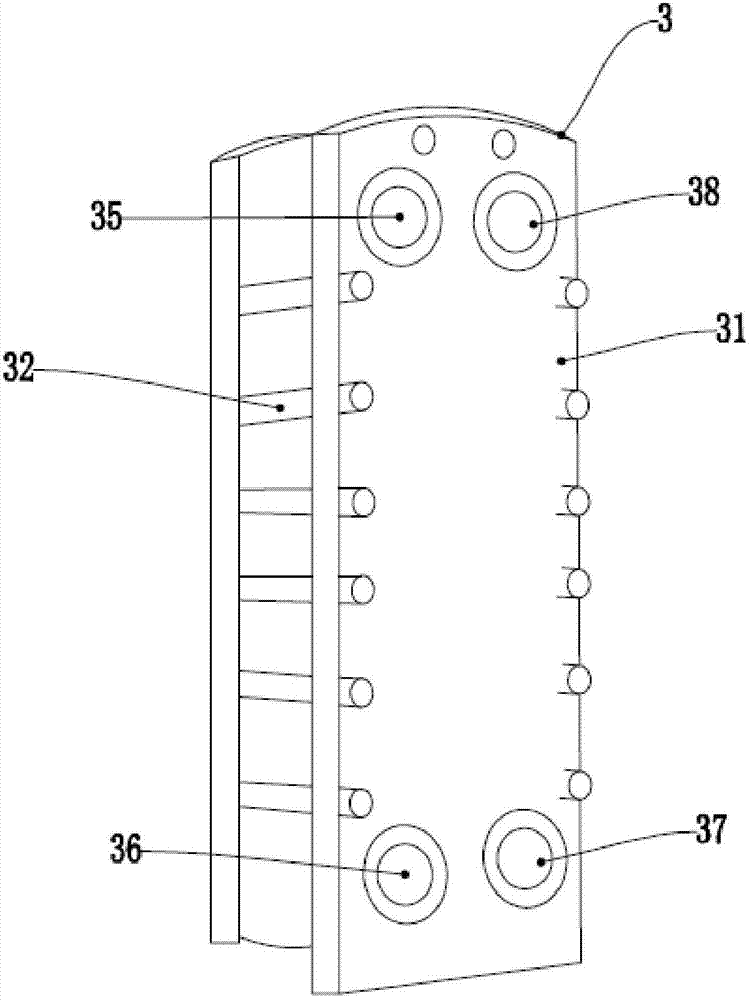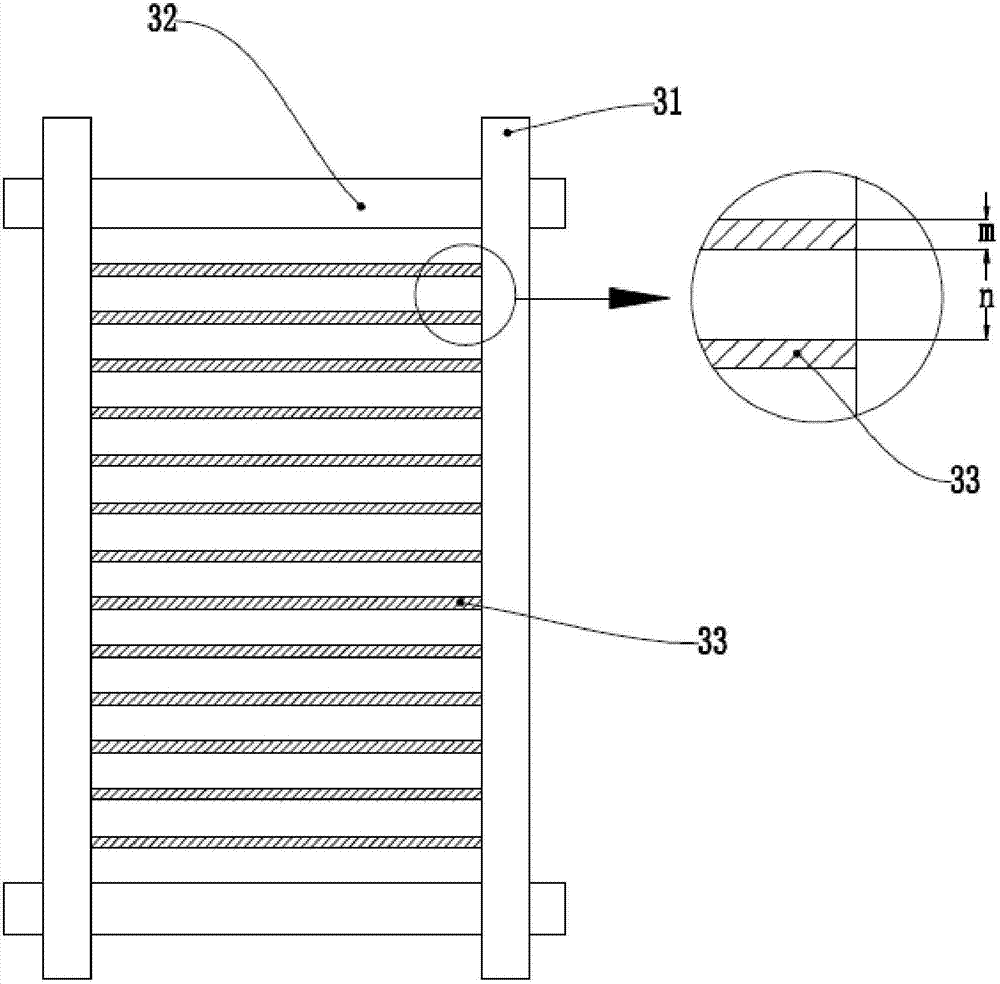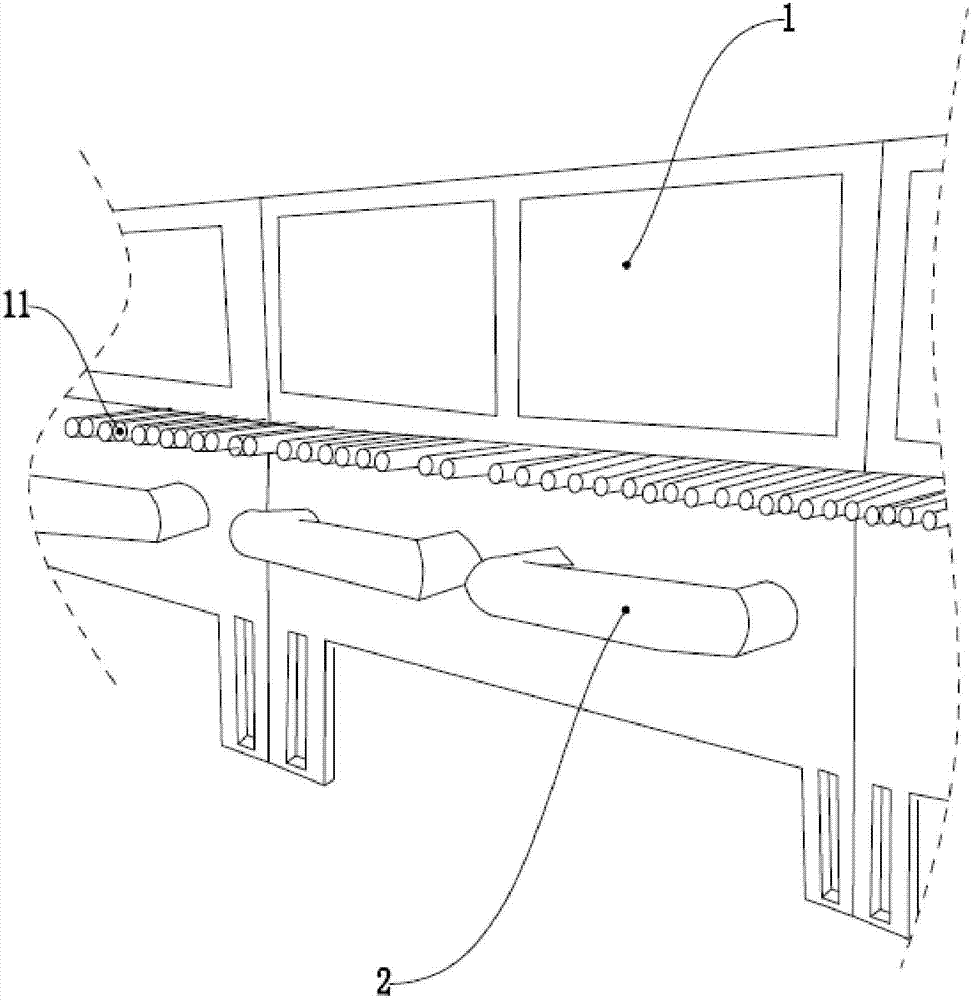Waste heat recycling system for ceramic kilns
A ceramic kiln and waste heat recovery technology, applied in furnaces, waste heat treatment, furnace components, etc., can solve the problems of insufficient utilization and insufficient utilization of hot water
- Summary
- Abstract
- Description
- Claims
- Application Information
AI Technical Summary
Problems solved by technology
Method used
Image
Examples
Embodiment Construction
[0023] The technical solutions of the present invention will be further described below in conjunction with the accompanying drawings and through specific implementation methods.
[0024] The plate heat exchanger 3 is composed of concave and convex stainless steel heat exchange plates 33 formed by stamping. The hot water and slurry are respectively on both sides of the heat exchange plates 33, and the concave and convex lines between adjacent heat exchange plates 33 are combined at 180 degrees. Therefore, the concave and convex ridges between the heat exchange plates 33 form staggered contact points, and these staggered flow structures make the hot and cold fluids in the plate heat exchanger 3 generate strong turbulence to achieve high heat exchange effect. Plate heat exchanger 3 is a commonly used heat exchanger in industry, but no one has ever applied it to the heating process of ceramic slurry.
[0025] Ceramic powder is formed from raw materials through processes such as b...
PUM
| Property | Measurement | Unit |
|---|---|---|
| thickness | aaaaa | aaaaa |
| thickness | aaaaa | aaaaa |
| thickness | aaaaa | aaaaa |
Abstract
Description
Claims
Application Information
 Login to View More
Login to View More - R&D
- Intellectual Property
- Life Sciences
- Materials
- Tech Scout
- Unparalleled Data Quality
- Higher Quality Content
- 60% Fewer Hallucinations
Browse by: Latest US Patents, China's latest patents, Technical Efficacy Thesaurus, Application Domain, Technology Topic, Popular Technical Reports.
© 2025 PatSnap. All rights reserved.Legal|Privacy policy|Modern Slavery Act Transparency Statement|Sitemap|About US| Contact US: help@patsnap.com



